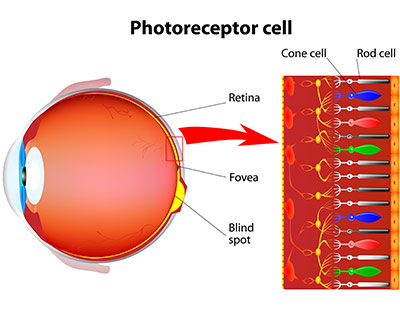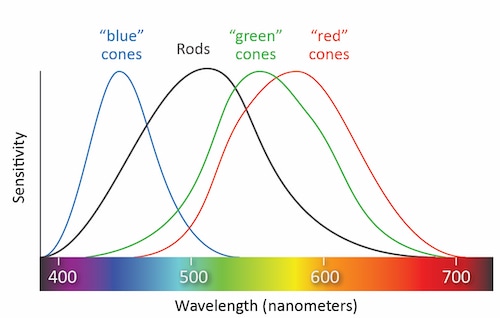We all have been to school at one point in our life. If the school is near to the house, we go to school by bicycle or by walking. But if the school is far away then go to school via school bus (at least for once in our school life).
Now, there are different kinds of school buses used in different places. But one thing is always common among these and that is their color.
No matter what is the design of the school bus, the color of the school bus is always yellow.
But why?
Well, there are many reasons for the color of the school bus to always be yellow. Firstly, the yellow color is the most visible to the eye. Apart from this yellow color has higher lateral peripheral vision.
I have discussed all the possible reasons in detail in this article. So, let’s find out and learn something new today.
Table of Contents
How do human eyes see color?
Before finding out why school buses are yellow in color, it is very important to understand how the human eye sees color and also differentiate between different colors.
As we all know that the retina of the eye converts the light reflected from the object into electrical signals.
There are a special type of stem cells present in the retina known as photoreceptor cells, capable of converting light into electrical signals.
There are three types of photoreceptor cells present in the retina, namely
- rods,
- cones and
- photosensitive retinal ganglion cells.
But in this article, we will only focus on rods and cones.
Difference between rods and cones:
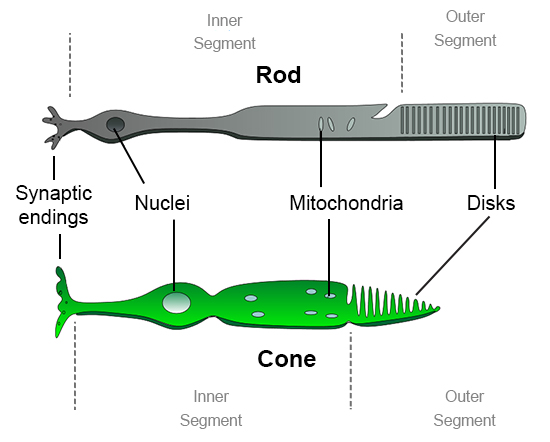
Rods are basically more sensitive than cones and also present in a large amount roughly estimated to about 120 million. But rods are not sensitive to color.
On the other hand, cones are lesser in number, roughly estimated to about 6-7 million but are sensitive to color. Thus, cones are responsible for color vision.
Almost all the cones are concentrated on a 0.3-millimeter spot on the retina known as “fovea centralis”.
Since rods are extremely sensitive and can be triggered by a single photon, these are responsible for our vision in low light.
But on the other hand, cones are not that sensitive to light. This is the reason we only see the subject/object in low light and not its color.
How the human eye differentiate between colors?
But now you might have a question that how these cones work and how we are able to differentiate between different colors?
There are basically three different types of cone cells namely:
- S-cones,
- M-cones, and
- L-cones.
S-cones are responsible for sensitivity to light of short-wavelength, M-cones for the light of medium wavelength and L-cones for the light of long wavelength.
These different cone cells produce different patterns to different wavelengths of light.
When the light hits an object, some of the light is absorbed by the object and the rest of it is reflected depending on the properties of the object.
This reflected light hits the retina of the eye. Now depending on the wavelength of the reflected light, we see its color. This is where the work of the cones started.
Now that you have understood how our eye differentiates between different colors, let’s see why the color of the school bus is always yellow.
ALSO READ: Why Taj Mahal is turning Yellow and Green? – These are the reasons
3 Reasons Why School Buses Are Yellow In Color
Reason 1: In bright light, the human eye is most sensitive to yellow color.
Cones are mostly sensitive to one of the three primary colors namely red, green and blue.
Red color has the maximum wavelength in the visible spectrum of colors. That’s why L-cones are mostly responsible for the perception of red color.
Similarly green color has a wavelength less than that of red but more than that of blue color. That’s why M-cones are mostly responsible for the perception of green color.
Since yellow color is a combination of red and green color, it’s wavelength lies between that of red and green color. That’s why it stimulates both L-cones and M-cones almost equally. That’s why in moderate to bright light, the human eye is more sensitive to yellow color.
Reason 2: Yellow is the most visible color to the eye.
For example, let’s see this photo. The first thing you will notice is the yellow color among all the colors.
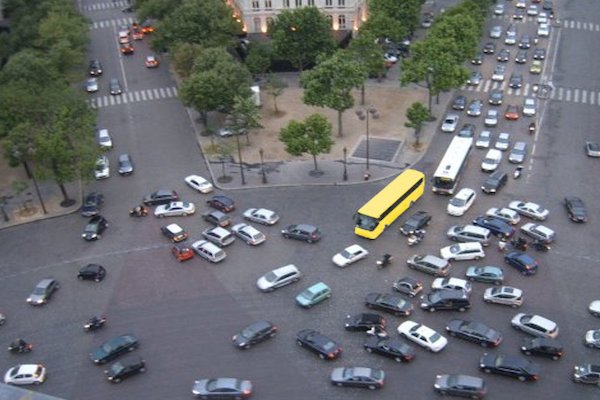
But now you might have a question that red color has similar characteristics to that of yellow color.
It is fairly visible in the moderate light. Secondly, it is also one of the most visible colors and because of this, they are used in traffic signals and road signs (especially danger sign).
Then why not red? Let’s see the reason 3 to find out.
Reason 3: Lateral Peripheral Vision
Yes, the main reason behind the choice of yellow color for the school bus is something called as lateral peripheral vision.
Let me explain it to in simple words.
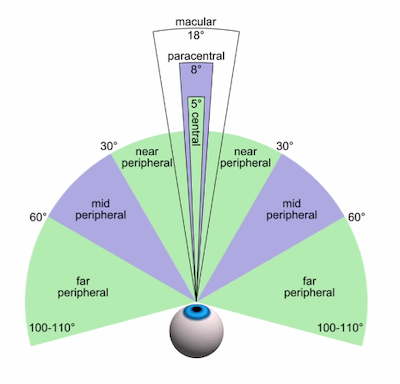
When you stare straight ahead without moving your eyes or head, the objects you are able to see to your left and right, above and below you, will determine what is called your peripheral vision.
Thus peripheral vision is the part of our vision that lie outside the center of our gaze.
Now the lateral peripheral vision of yellow color is 1.24 times greater than the red color. It means that you are 1.24 times more likely to see a yellow object even when you are not looking straight at it, all thanks to the human peripheral vision.
Thus, even if not looking straight, children are able to see the yellow colored school bus.
Conclusion
In conclusion, we can say that yellow color is the most visible color to the eye (in general).
Also, it is easy to identify among the plethora of colors. And last but not the least, peripheral vision (as discussed above) of yellow color is greater than that of red color.
So it is easy for people, especially school kids to recognize their school bus, even if they are not looking straight at it.
If you like this article, then please share it on your social media (Facebook, WhatsApp, Twitter etc), so that more and more people, especially school going kids can know that why the color of their school bus is yellow.
Sources:
- https://www.livescience.com/32559-why-do-we-see-in-color.html
- http://hyperphysics.phy-astr.gsu.edu/hbase/vision/rodcone.html
- https://www.eyehealthweb.com/peripheral-vision/
